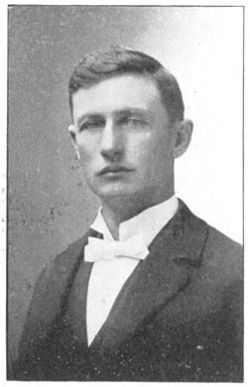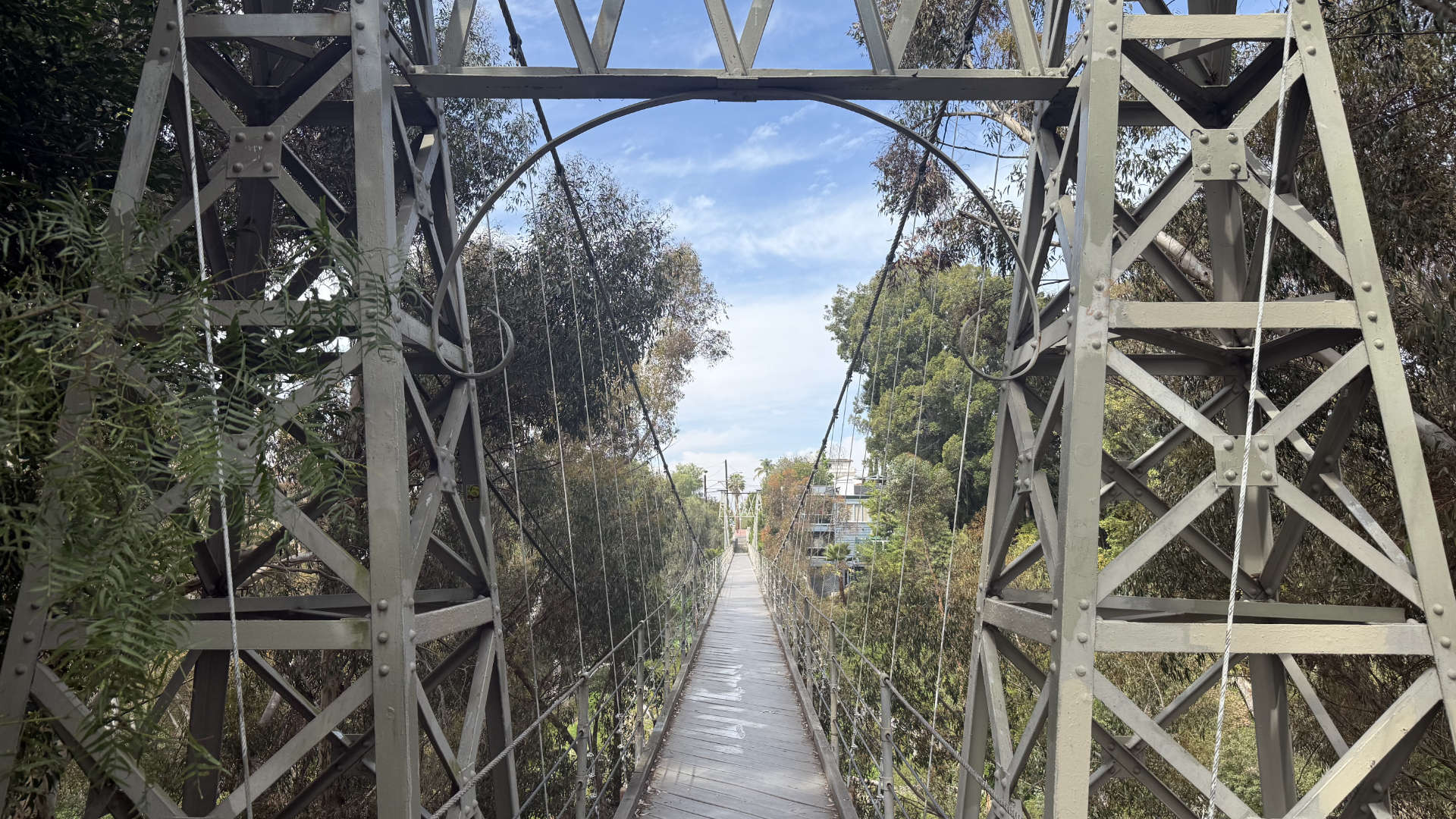A Bridge Through Time: History and Significance
Genesis of a Connection: Edwin Capps' Vision

Portrait of Edwin M. Capps. Public Domain.
The story of the Spruce Street Suspension Bridge begins in the early 1900s, a period of growth and ambition for San Diego. As neighborhoods expanded, the deep canyons carving through the landscape presented significant obstacles. Kate Sessions Canyon (then known as Paloma Canyon, later also called Arroyo Canyon) isolated developing residential areas in Bankers Hill from the vital new streetcar lines operating along Fourth and Fifth Avenues.
The challenge was met by Edwin M. Capps, a prominent figure who served not only as the City Engineer but was also twice elected Mayor of San Diego. This dual role placed him in a unique position to envision and implement infrastructure projects crucial for the city's development.
Capps designed the suspension bridge in 1911, proposing an elegant solution to connect communities and facilitate access to public transit and eastern schools. Construction commenced, and despite logistical hurdles related to the location and transporting materials across the canyon, the bridge was completed and opened to the public. While most sources state completion in 1912, a contemporary newspaper report indicates it opened in late November 1911, heralded as the "Longest Suspended Foot Bridge on Coast" at the time. Its construction was a testament to the city's forward-thinking spirit and Capps' engineering prowess, transforming what the San Diego Union called an "inaccessible neighborhood" by making numerous residential lots suddenly desirable. Learn more about the bridge's design here.
From Vital Artery to Cherished Landmark

Initially, the bridge served a critical infrastructural purpose, providing essential pedestrian passage for residents needing to reach the trolley lines that were the backbone of urban transportation. It was more than functional; it became a symbol of San Diego's ability to overcome geographical challenges and connect its communities.
As the 20th century progressed and automobiles became more prevalent, the bridge's role shifted. The increased traffic and weight put a strain on the original structure, particularly its wooden deck. This led to concerns about its long-term viability and prompted renovations, including a significant project in the 1970s where the wooden deck was replaced with a more durable steel grid deck – a change that addressed safety but altered the bridge's original aesthetic. Further rehabilitation occurred in 1985.
Over time, the bridge transitioned from a purely utilitarian structure to a beloved historical and cultural landmark. Its unique character and scenic location made it a popular spot. Recognizing its importance, the City of San Diego designated the Spruce Street Suspension Bridge as Historic Landmark #116 on January 7, 1977. This designation provides a layer of protection, ensuring that proposed alterations are reviewed for historical appropriateness, similar to how landmark status helped preserve the nearby Quince Street Bridge from demolition.
Further underscoring its historical value, the bridge is identified as a contributing structure within the proposed "Heart of Bankers Hill National Register Historic District". While this nomination, under review as of mid-2024, doesn't automatically place the bridge on the City's historic register, achieving National Register listing or even being determined eligible for listing grants it protection under the City's Historical Resources Regulations. The district's significance, cited under Criterion C for its excellent concentration of early-to-mid-twentieth-century residential architecture (1905-1961), firmly embeds the bridge within the rich historical context of its surrounding neighborhood. Explore more about Bankers Hill architecture here.
Beyond official recognition, the bridge holds significant cultural value. It's often referred to as a well-known "secret" of the neighborhood, celebrated with community events like its 100th birthday party in 2012 attended by Capps' great-great-granddaughter. Its picturesque setting and distinctive sway have made it a popular location for photos, frequently appearing on social media platforms like Instagram. The affectionate nicknames "Wiggly Bridge" or "Swinging Bridge" capture the unique physical experience of crossing it, cementing its place in local culture. This blend of official historical status, contribution to a significant historic district, and deep-seated local affection illustrates the bridge's multifaceted importance – valued not just for its past function but for its enduring presence and the unique experience it offers. Experience the "wiggle" yourself - plan your visit!